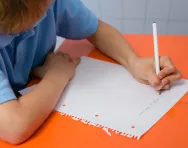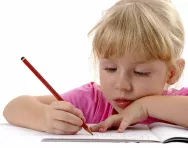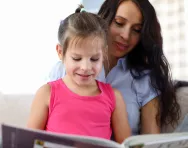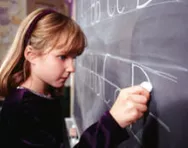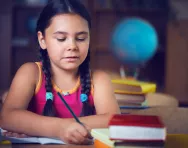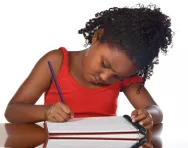Important update from TheSchoolRun
For the past 13 years, TheSchoolRun has been run by a small team of mums working from home, dedicated to providing quality educational resources to primary school parents. Unfortunately, rising supplier costs and falling revenue have made it impossible for us to continue operating, and we’ve had to make the difficult decision to close. The good news: We’ve arranged for another educational provider to take over many of our resources. These will be hosted on a new portal, where the content will be updated and expanded to support your child’s learning.
What this means for subscribers:
- Your subscription is still active, and for now, you can keep using the website as normal — just log in with your usual details to access all our articles and resources*.
- In a few months, all resources will move to the new portal. You’ll continue to have access there until your subscription ends. We’ll send you full details nearer the time.
- As a thank you for your support, we’ll also be sending you 16 primary school eBooks (worth £108.84) to download and keep.
A few changes to be aware of:
- The Learning Journey weekly email has ended, but your child’s plan will still be updated on your dashboard each Monday. Just log in to see the recommended worksheets.
- The 11+ weekly emails have now ended. We sent you all the remaining emails in the series at the end of March — please check your inbox (and spam folder) if you haven’t seen them. You can also follow the full programme here: 11+ Learning Journey.
If you have any questions, please contact us at [email protected]. Thank you for being part of our journey it’s been a privilege to support your family’s learning.
*If you need to reset your password, it will still work as usual. Please check your spam folder if the reset email doesn’t appear in your inbox.
9 fun writing projects to boost literacy skills
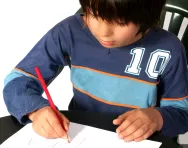
These activities are all designed with fun in mind, but by working through them your child will learn a crucial part of the national literacy strategy – writing for purpose. Through writing in these various formats your child will be thinking about characterisation, plot development and story components, as well as practising their phonics and handwriting skills.
1. What would the bubble be?
Draw and cut out some speech and thought bubbles. Go through one of your child’s favourite stories with them. At various key moments in the story, ask them to suggest what the characters might be thinking, or what they might like to say. Encourage them to write in the thought and speech bubbles, and stick them temporarily onto the page (using Blu-Tack or similar).
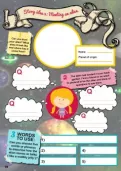
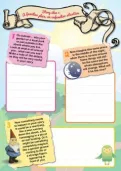
Download a FREE Creative Writing toolkit!
- KS1 & KS2 workbooks
- Bursting with fill-in prompt sheets and inspiring ideas
- Story structure tips, style guides and editing suggestions
2. Write a letter to a character
Having your child write to their favourite story character is a great way teach them how to set out a letter properly. How about the tiger in The Tiger Who Came to Tea? What would they like to say to him? Or suggest they try writing a letter of apology from Goldilocks to the three bears.
3. Make a WANTED poster
Does your child have a favourite story where a toy or a character gets lost (Dogger in Dogger by Shirley Hughes or Courtney in John Burningham’s Courtney are two examples)? Help them design a LOST poster, and then discuss how they’ll need to describe the character or toy in detail; encourage them to think of size, colour, defining characteristics, etc. If they wish to write these as a list they can format it with bullet points or numbers, which will give you the chance to talk about how this can make a list easier to read.
4. Create alternative endings
Take one of your child’s favourite books and ask them to retell it – verbally, pictorially or by writing down what happens. Discuss what happens at the end of the story. Do they like the ending? Work together on what could be a different ending – ask if they want it to be happy/sad/funny/shocking, etc. Help them write it out, then tell or read the entire story with their new ending.
5. Character shopping list
If a character went on a shopping trip, what would they need? Younger children can write out some items a characters needs in a story (what does the Little Red Hen need to make her cakes, for instance). For older children, it could get more creative –making up new plots for their favourite character, and then suggesting some items they might need to purchase.
6. Become a journalist
Invite your child to write a newspaper article about some of the events in a favourite story. This will really get them thinking about the needs of the reader as they’ll have to explain the facts clearly and succinctly and in order, pretending that the reader knows nothing of the events that have occurred. Try "The Three Little Pigs" or another tale they know really well. Have a look at some articles together to help your child become familiar with the format.
7. Plan a party
Children typically love writing invitations – perhaps because they love parties! They also tend to like sticking to such a rigid and seemingly grown-up format. Discuss with them what they will need to include on the invitation: time, cause for celebration, place, dress code, food, entertainment. They can have huge fun decorating, too. For example, they could write an invitation to Cinderella’s wedding, or to the Hungry Caterpillar’s birthday party – imagine the food at that do!
8. Write reminder notes
Provide your child with some Post-it notes, and explain how sometimes we might use these to write memos to remind us of tasks we need to carry out. Ask them what certain characters might need to remember. Think Elmer, for instance – perhaps he needs to remember that it’s fantastic to be different. Or Baby Owl in Martin Wadell’s Owl Babies needs to be reminded that his Mummy has only gone for a short while.
9. Make a birthday card
What if one of your child’s favourite characters had a birthday? Discuss what they could draw on the front of their birthday card – what would the character like to see pictures of? How old do you think the character might be? Inside, your child can even write a little rhyme or special message. Have them look at some of their own birthday cards for inspiration.
Digital storytelling fun for kids
Harness your child's natural interest in all things digital with a story-making app: creative writing by stealth!
We also recommend the free art and creative writing challenges on the Night Zookeeper website; by expressing their creativity your child will be contributing to a co-created animated television show.
